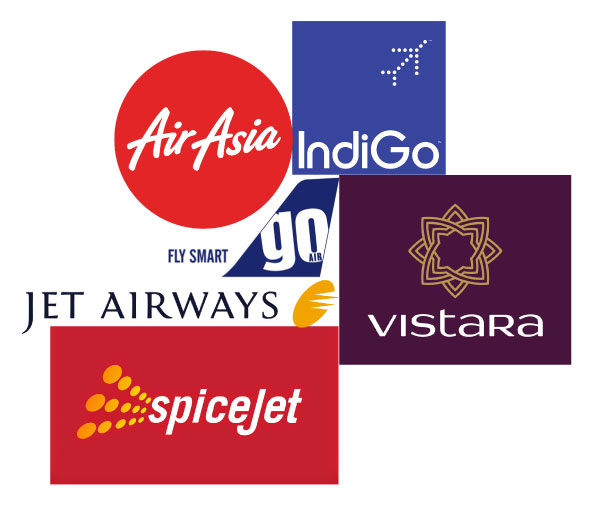Indian carriers face pilot shortages with deliveries underway of as many as 1,000 planes that have been ordered until 2030. Over the next year or so, as many as 1,000 pilots may be needed to fly new aircraft as they are added to the schedules, rising to 10,000 in a decade, it’s estimated.
Airlines such as IndiGoNSE 0.68 %, SpiceJet, Jet AirwaysNSE 1.69 %, GoAir, Vistara and AirAsia are set to get a combined 100 new planes between now and March 2019, said senior executives at the airlines. This means there will be a requirement for 800 to 1,000 pilots–first officers and commanders, equally–in that time. While there’s no dearth of first officers, commanders are in short supply. Narrow-body planes such as the Airbus A320 and the Boeing 737 have two pilots—a first officer and a com.
“Indian airlines require over 800 commanders over the next one year,” said Kapil Kaul, South Asia CEO of Sydney-based consultant CAPA Centre for Aviation. He sees the shortage at about 30% or 240 pilots in 12 months.

While airlines are training and upgrading first officers to become captains, many haven’t hired enough to meet the demand for commanders in the coming years, raising the prospect of overworked pilots.
Economic growth, an expanding middle class and rising personal incomes have contributed to India becoming one of the fastest-growing aviation markets in the world. Over the next decade, Indian carriers are scheduled to take delivery of over 1,000 planes, which means a requirement for 8,000 to 10,000 pilots.
A limited pool of homegrown commanders and the government discouraging the hiring of expatriates is posing problems for the carriers, according to airline executives.
“Compared to the steep growth of the Indian airline industry, there is no natural influx of homegrown pilots, especially commanders in India. We have to depend on expatriates,” Cornelis Vrieswijk, CEO of no-frills carrier GoAir, said in a recent interview. He added that the red tape and stringent regulatory procedures associated with getting an expatriate pilot ready to fly adds to the problem.
“It takes 40-50-60 days. The regulatory approvals are also more stringent than in other countries,” said Vrieswijk.
“The DGCA (Directorate General of Civil Aviation) still uses several medical requisites laid down by the Indian Air Force for pilots, which makes it difficult for many expatriates,” said a senior pilot at a low-fare carrier. “Please remember, Indian companies can’t really afford American or European pilots. It’s usually Russians or Ukranians or Mexicans.”
The problem is more acute for the new regional carriers.
“There is scarcity of commanders for startup airlines. But for us even finding first officers is a problem. A pilot would rather fly IndiGo’s ATR than mine as he knows he will be upgraded soon to an Airbus A320,” said V Umesh, managing director of south Indian regional carrier Trujet. The airline has five ATR planes and 40 mostly expatriate pilots.
Salary premiums for expatriates have also been lowered to control salary expenses, usually the second biggest cost component after fuel.
“An expatriate commander now gets about 30-35% higher base monthly salary ($13,000 or Rs 8.84 lakh) than his Indian counterpart, who gets about Rs 6.5 lakh, down from a 100% premium say three-five years before,” said the human resources chief of a top Indian carrier. “Also, most airlines have increased salary rates for Indian pilots by about 5-7% each year and not for expatriates, although some segments such as house rent allowance have been included.”
The growing pilot shortage is a global problem.
Pilots at European carriers such as RyanAir are seeking better working conditions by forming unions while those at Air France are planning industrial action over pay. At the recent annual meeting of the International Air Transport Association, its chief economist Brian Pearce cited wage pressures and pilot shortage as chronic symptoms of the global airline industry.
Pilots across the world are now flocking to the Middle East and China, said to be the best paymasters. Chinese carriers are giving up to $314,000 tax-free annually to foreign captains, more than double what an Indian carrier would pay, according to global reports. China requires 4,000-5,000 pilots every year for the next two decades, according to global estimates, about five times India’s requirement. Boeing estimates a requirement for close to 650,000 pilots for the global aviation industry in.

DGCA requires a first officer to complete 1,500 hours of flying to be eligible to become a commander. Most airlines have additional requirements on top of that. For instance, IndiGo mandates 3,000 hours of flying.
“By the end of four years with the company, a first officer gains the required expertise and experience to become the captain on an Airbus A320 or ATR aircraft,” said an IndiGo spokesperson. “As IndiGo will have a growing number of first officers, it will mean that on a continuous basis the company will be able to upgrade 300-400 senior first officers to captains on a yearly basis.”
Spokespersons at Vistara and Air Asia India, the Tata group’s ventures with Singapore Airlines and Air Asia Bhd, respectively, also said the priority would be to train and upgrade in house pilots to make a pool of commanders.
![]()
